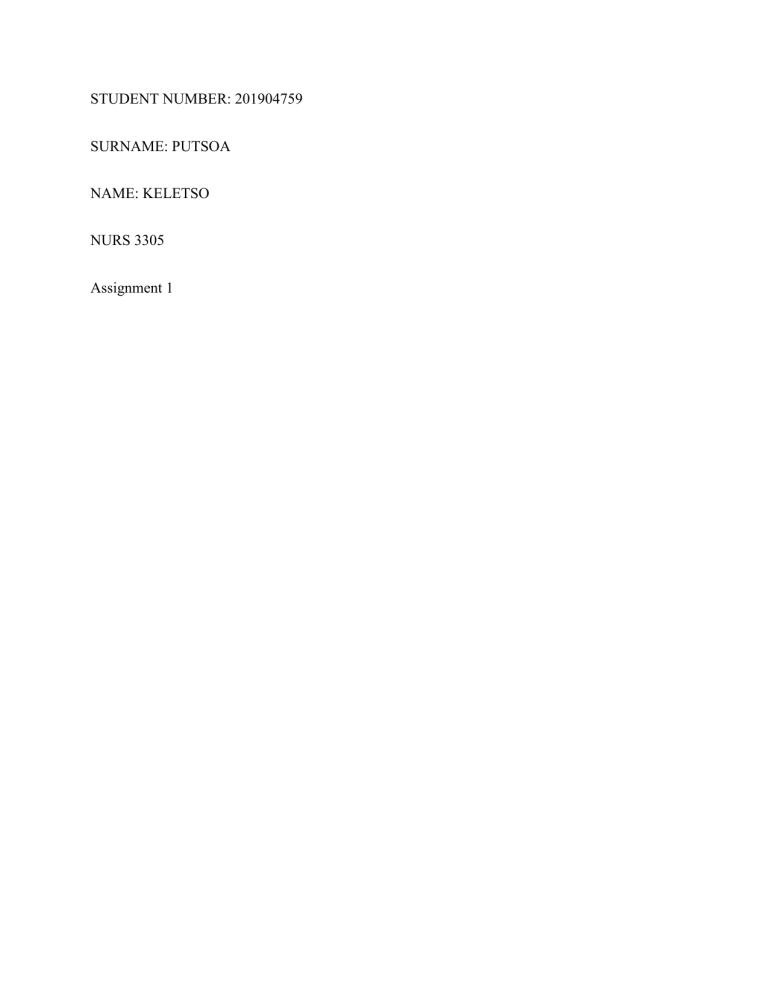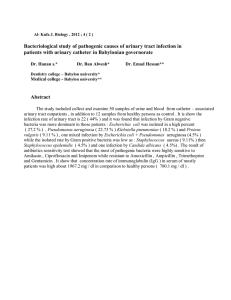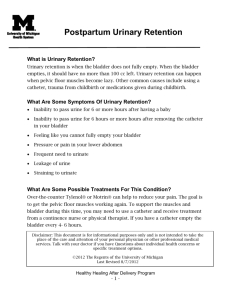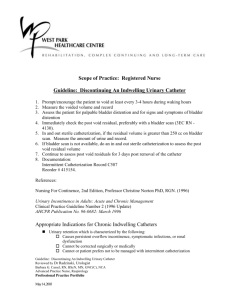
STUDENT NUMBER: 201904759 SURNAME: PUTSOA NAME: KELETSO NURS 3305 Assignment 1 CASE STUDY 1 Question 1 Risk for impaired gas exchange related to decrease in effective lung surface. Risk of severe urinary infection related to difficulty to pass urine. Risk of bladder cancer related to cancer spreading to other parts of the body therefore generally affecting urination. Question 2 DIAGNOSIS SUBJECTIVE DATA Impaired gaseous exchange He says he OBJECTIVE DATA experiences Very slow deep breaths difficulty in breathing due to chest pains Urinary infection Difficulty to urinate Voiding very few drops of urine Bladder cancer Pain on groin area Question 3 Impaired gaseous exchange Clear the airway by releasing the mucous buildup in the lungs. Urinary infection Swelling on the groin Insert indwelling catheter to ease the patient from the urge to urinate to avoid associating urinating with pain. Bladder cancer Relief pain and swelling within 2 days. Question 4 Educate the patient about tuberculosis and prostate cancer for self reassurence and acceptance. Reinforce teaching regarding disease and treatment and provide information as appropriate about dying. Take the patient to the isolated room in other to prevent any form of spread to other patients. Provide the patient with condom urinary catheter for more relaxation since sometimes when the cancer is severe indwelling catheter maybe painful due to the cancer tumor pressing over the urethra. CASE STUDY 2 Question 1 As per her age and BMI, she is said to be overweight and this can cause hypertension since the heart has to work harder than normal to supply the body with blood. Normal potassium levels are considered to be from 3.5mmol/L so low potassium caused a stress on the blood vessels walls resulting in an increase in blood pressure. Lack of physical activity can contribute in hypertension as it has direct link to weight gain therefre increasing the risk of hypertension. She eats a lot of canned food which can be associated with unhealthy diet since they are considered to be high in sodium Question 2 Overweight Elderly age Lack of physical exercise Stress Question 3 Eating fresh fruits and vegetables for relaxation of blood vessels. Encourage low-fat dairy food and reduced in overall fat. At least use fruit flavours in her food instead of salt. Discourage her from eating lot of canned food to reduce sodium intake. Encourage her to eat more vegetables and water than carbohydrates in order to maintain her body weight therefore achieving a better BMI. Question 4 Potassium sparing diuretics because this diuretics help to get rid of sodium and water and this is done by the kidneys to release more sodium into urine. There after, sodium will help decrease blood pressure by taking water with it from blood therefore decreasing the amount of fluid flow through blood vessels. Example: triamterene. Question 5 Teaching the patient to take medication as prescribed to maintain a normal hypertension and avoid stroke in a long run. Teach her how monitor blood pressure so she can continue doing so at home. Tell the patient to start to engage herself on physical activities like going for walk to dwell on her body weight. Tell family members or care takes about hypertension and health support to the patient. Question 6 High risk for obesity related to lack of physical activity. Risk for coronary heart disease associated with atherosclerosis related to cardiovascular resistance. Risk for food poisoning related to eating a lot of canned food that can be associated with bacterial infection during canning.





